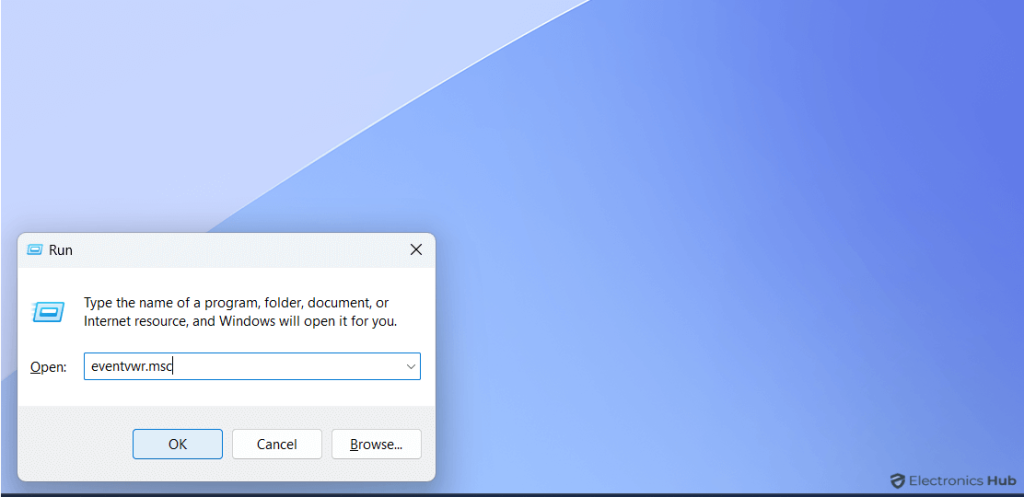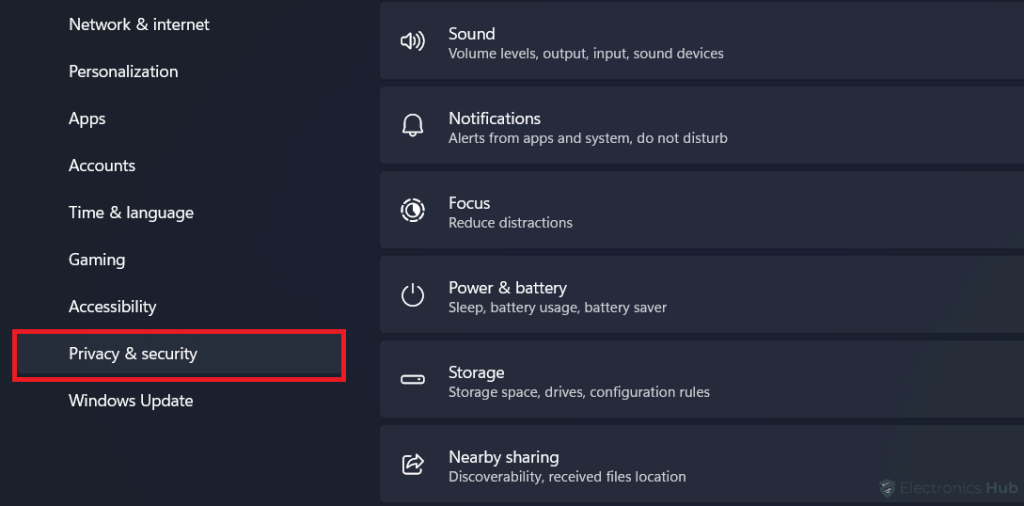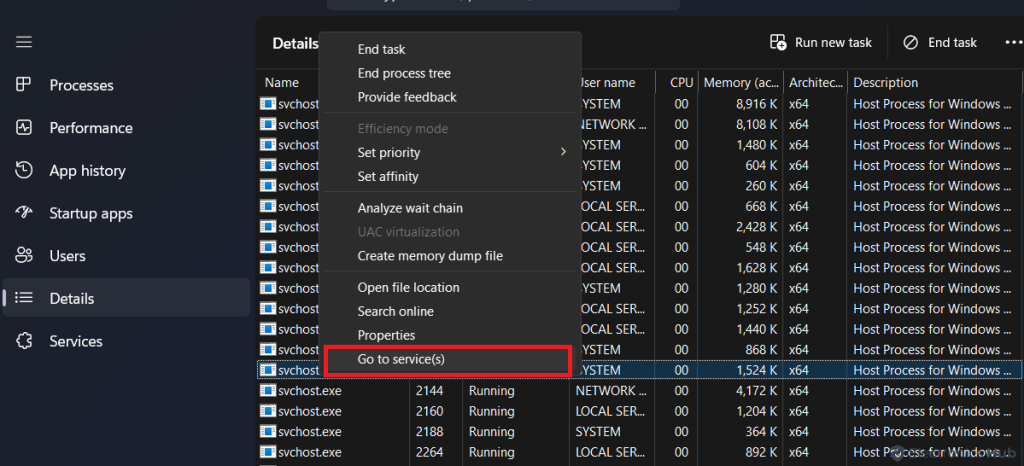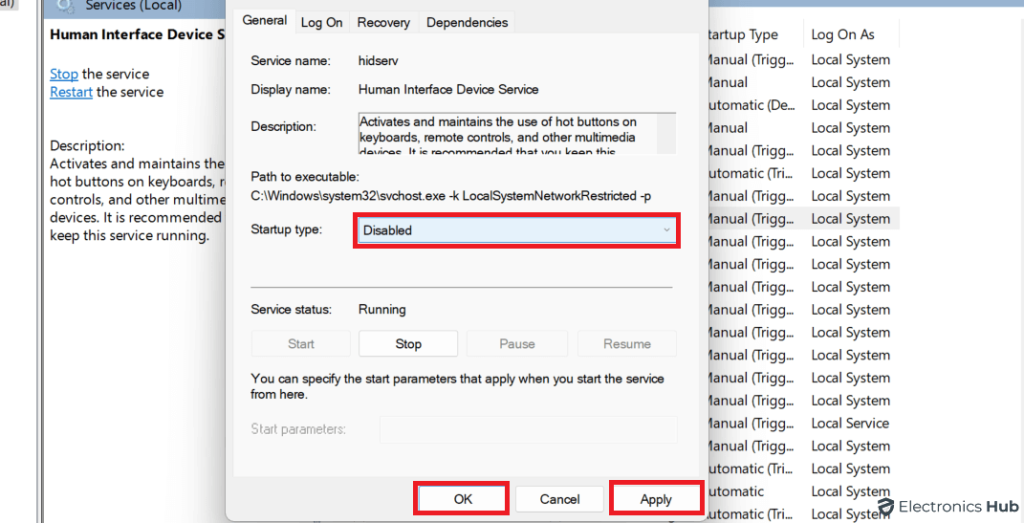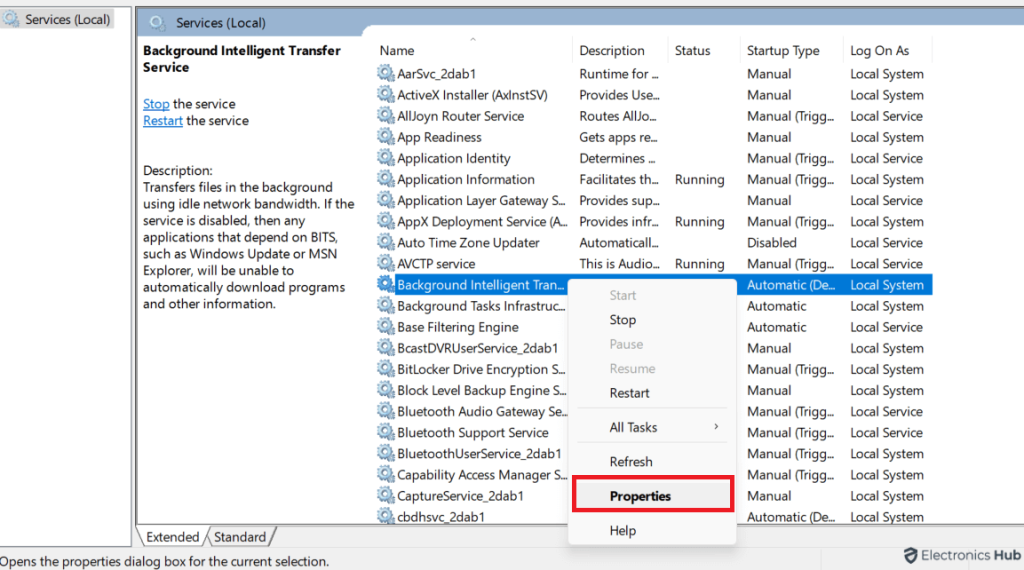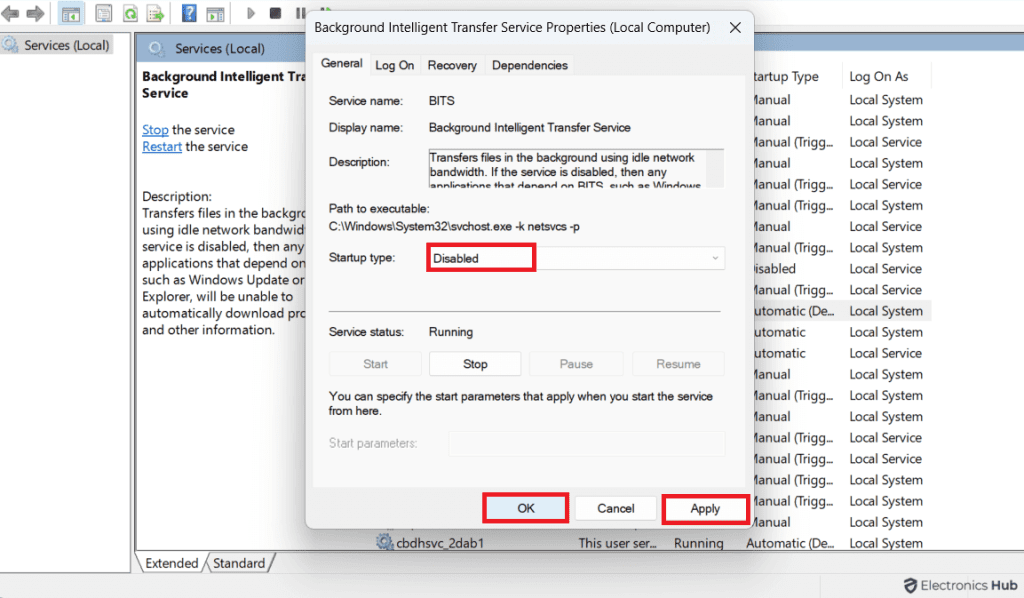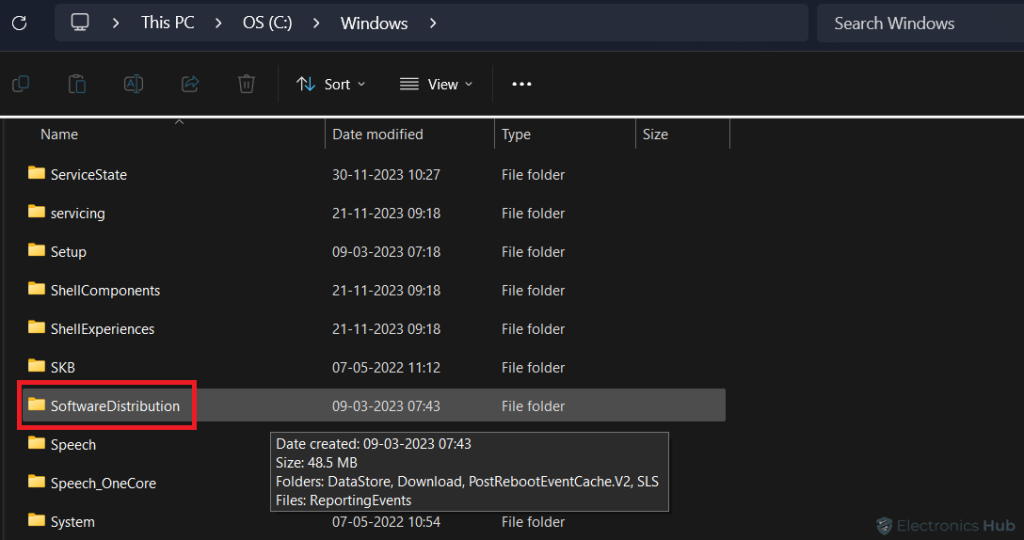Ever noticed your computer slowing down to a crawl, becoming unresponsive, or even crashing for seemingly no reason? This frustrating issue is often caused by a specific Windows process called svchost.exe (netsvcs), which can unexpectedly consume excessive network usage and memory, causing your device to become sluggish and unresponsive.
Many Windows users have experienced this issue, and it can be quite frustrating. But the good news is that it’s fixable. In this guide, we’ll break down the svchost.exe (netsvcs) issue in simple terms, explain why it happens, and provide you with straightforward solutions to get your computer back on track.
So, let’s dive in and reclaim your computer’s performance!
Outline
Toggle- What is svchost.exe (netsvcs)?
- Why svchost.exe High Network Usage and Memory Leak Problem Occurs?
- Is svchost.exe (netsvcs) a virus/ Malware?
- High Network Usage and Memory Leak Caused by svchost.exe (netsvcs) – Fixes
- 1. Clear Your Empty Viewer Logs
- 2. Run Windows Update Troubleshooter
- 3. Scan Your Computer/PC
- 4. Disable the Service That Causes the “svchost” High CPU Usage
- 5. Disable BITS (Background Intelligent Transfer Service) and Wuauserv Services
- 6. Update Your Windows to the Latest Version
- 7. Delete the SoftwareDistribution Folder
- High Network Usage and Memory Leak Caused by svchost.exe (netsvcs) – FAQs
- Conclusion
What is svchost.exe (netsvcs)?
svchost.exe is a generic host process for Windows services. It is a legitimate process that is essential for the proper functioning of Windows. The name “svchost.exe” stands for “Service Host”, and it is used by Windows to group multiple services together into a single process. This makes it more efficient to manage
The netsvcs service is one of the many services that can be grouped under the svchost.exe process. The netsvcs service is responsible for managing network connections and file sharing.
Here are some of the key features of svchost.exe (netsvcs):
- Groups multiple Windows services together into a single process
- Improves the efficiency of service management
- Reduces the number of processes that are running on your computer
- Is a legitimate and essential Windows process
Why svchost.exe High Network Usage and Memory Leak Problem Occurs?
The svchost.exe (netsvcs) process can experience high network usage and memory leak problems for a variety of reasons. Some of the most common causes include:
- A problem with a Windows service: A specific Windows service that is grouped under the svchost.exe process may be experiencing a problem, such as a bug or a corrupted file.
- Malware: Malware can sometimes infect the svchost.exe process, causing it to use excessive resources.
- Third-party software: Third-party software can sometimes conflict with the svchost.exe process, causing it to experience problems.
- Windows Update: Windows Update can sometimes cause svchost.exe (netsvcs) to use excessive resources.
- Full Event log file: A full Event log file can sometimes cause svchost.exe (netsvcs) to use excessive resources.
Is svchost.exe (netsvcs) a virus/ Malware?
The svchost.exe (netsvcs) process itself is not a virus or malware. It is a legitimate Windows process that is essential for the proper functioning of your computer. However, malware can sometimes infect the svchost.exe (netsvcs) process, causing it to use excessive resources or behave erratically.
Here are some signs that svchost.exe (netsvcs) may be infected with malware:
- High network usage: svchost.exe (netsvcs) is using a lot of network bandwidth, even when you are not actively using the internet.
- High CPU usage: svchost.exe (netsvcs) is using a lot of CPU resources, even when you are not running any demanding programs.
- Unexpected behavior: svchost.exe (netsvcs) is causing unexpected behavior, such as crashing programs or freezing your computer.
High Network Usage and Memory Leak Caused by svchost.exe (netsvcs) – Fixes
There are several troubleshooting steps you can take to identify and resolve the issue. Here’s a comprehensive guide to help you address this problem and restore your computer’s performance.
1. Clear Your Empty Viewer Logs
Event Viewer logs can sometimes cause high network usage and memory leak problems. To clear your Event Viewer logs, follow these steps:
- Open Event Viewer. To do this, press the Win key + R to open the Run dialog box, type eventvwr.msc, and then press Enter.
- On the right side, click on Windows Logs and expand it to see more options.
- Right-click on Application (Log) and choose Clear Log from the menu.
- Click the Clear button to confirm.
- Repeat the same process for Setup Log, System Log, and Security Log to clear all the logs.
- Restart your computer.
- Check if the issue with high resource usage caused by svchost.exe is still there.
2. Run Windows Update Troubleshooter
The Windows Update Troubleshooter can help to identify and fix problems with Windows Update that may be causing high network usage. To run the Windows Update Troubleshooter in Windows 11, follow these steps:
- Open the Settings app. To do this, click on the Start button, and then click on the Settings gear icon.
- In the Settings app, click on the System tab located in the left side menu.
- Scroll Down and select Troubleshoot.
- In the Troubleshoot windows, select Other troubleshooters.
- Find and click on Run Button next to Windows Update and follow on-screen instructions.
- After the troubleshooter is done, restart your computer.
3. Scan Your Computer/PC
As we talked about earlier, if your computer is slowing down because of svchost.exe, it could be due to a malware or virus. If you’re using Windows, you can check for infections using Windows Defender. Just run a quick scan.
Note: If you have another antivirus program, you can use that too. The steps might be different, so just follow the instructions on the official website of your antivirus.
- Open Settings by pressing Win key + I on your keyboard.
- Click on the Privacy & Security tab located in the left side menu.
- Choose Windows Security located under the Security section.
- Then Select Virus and Threat Protection.
- Click on Quick Scan and then wait for Windows Defender to complete the scan on your device. It will provide a report on any discovered issues and recommend the necessary actions to prevent and eliminate threats.
After removing any malware from your computer, verify if the problems associated with svchost.exe persist.
4. Disable the Service That Causes the “svchost” High CPU Usage
As I explained earlier, svchost.exe helps various programs and services run on your computer.
So, if you’re wondering why it’s using a lot of your computer’s power, you need to figure out which specific program or service is using that svchost.exe.
Once you find it, you can either turn off the service or remove the program causing the high CPU usage.
To find the program or service hogging your computer’s power, just follow these steps:
- Press Ctrl + shift + Esc to open Task Manager.
- Click on the Details tab.
- Find the svchost.exe process using too much power.
- Right-click on it and choose Go to service(s).
- The service causing the issue will be highlighted. Right-click on it and select Restart to reboot the service.
- If the problem persists, right-click on the Svchost process and choose Stop to halt it.
- To prevent it from starting again, right-click on the service, pick Open services, find it in the list, and double-click.
- In the window that opens, choose Disabled from the Startup type dropdown. Click OK and then Apply.
Restart your computer and check if the high network usage problem has been resolved.
5. Disable BITS (Background Intelligent Transfer Service) and Wuauserv Services
The Background Intelligent Transfer Service (BITS) and the Windows Update Service (Wuauserv) are two services that can sometimes cause high network usage. To disable these services, follow these steps:
- Open Services. To do this, press the Win key + R to open the Run dialog box, type services.msc, and then press Enter.
- Locate the BITS service and the Wuauserv service.
- Right click on each service and select Properties.
- In the Properties dialog box, set the Startup type to Disabled.
- Click on the OK and Apply buttons.
Once you have disabled the BITS and Wuauserv services, restart your computer and check if the high network usage problem has been resolved.
6. Update Your Windows to the Latest Version
Microsoft is constantly releasing updates to Windows that fix bugs and security vulnerabilities. Make sure that you are running the latest version of Windows to help prevent problems with svchost.exe (netsvcs).
- Open Settings by pressing Win key + I on your keyboard.
- Click on Windows Update located in the left side menu.
- Click on the Check for updates button to check the latest updates.
- If updates are available, you will see a message indicating the number of available updates. Click on the Download and install or Install now button.
- Wait for Windows to download completely and apply the necessary updates.
- Once the updates have been installed, you may be prompted to restart your computer to apply the changes fully. If prompted, restart your computer to ensure that the updates are implemented correctly.
7. Delete the SoftwareDistribution Folder
The SoftwareDistribution folder is used by Windows Update to store temporary files. Deleting this folder can sometimes help to fix problems with Windows Update. To delete the SoftwareDistribution folder, follow these steps:
If you didn’t turn off Windows Update using the earlier method, you can temporarily pause it with these steps:
- Press the Win key + R to open the Run utility.
- Type services.msc and press OK. This opens the Services window.
- Look for the Windows Update service, right-click on it, and choose Stop.
To Delete SoftwareDistribution folder:
- Go to C:\Windows using File Explorer and Locate SoftwareDistribution.
- Right-click on the SoftwareDistribution folder and select Delete from the menu.
- Restart your computer and check if the problems are resolved.
High Network Usage and Memory Leak Caused by svchost.exe (netsvcs) – FAQs
Ans: Svchost.exe (netsvcs) is a crucial Windows process responsible for hosting multiple services. However, in some cases, it can lead to high network usage and memory leaks.
Ans: High network usage and memory leaks with svchost.exe (netsvcs) can be caused by various factors, including Windows Update issues, malware infections, or specific services running under svchost.exe.
Ans: As a system program, svchost.exe is located in the system folder “\Windows\System32.” This is a protected folder that cannot be accessed by users who do not have administrator privileges. The program is launched by the Service Control Manager (SCM) after system startup.
Ans: If Windows Update is causing the problem, temporarily pause the service, delete the SoftwareDistribution folder, and restart your computer. This may resolve the high network usage and memory leak.
Ans: Svchost.exe processes are usually safe, but hackers and cybercriminals can create svchost malware to mimic legitimate svchost. exes. Legitimate svchost.exe files are sometimes flagged by virus scanners since they have access to sensitive areas of the computer. Normally, the folder system32 has svchost.exe files in it.
Conclusion
svchost.exe (netsvcs) is a legitimate Windows process that can sometimes cause high network usage or memory leak problems. This can be caused by a variety of factors, such as a problem with a Windows service, malware, or third-party software. There are a number of troubleshooting steps you can take to identify and resolve the issue.
If you are experiencing problems with svchost.exe (netsvcs), it is important to troubleshoot the problem to identify the specific cause. Once you know the cause, you can then take the appropriate steps to fix it.

